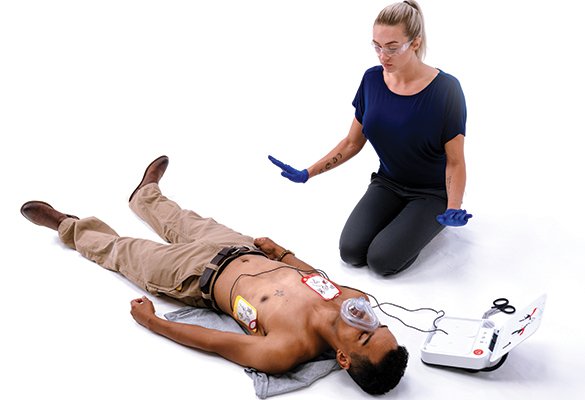A Step-by-Step Guide to Using an AED Safely and Effectively
In today’s fast-paced world, emergencies can happen anytime, anywhere. That’s why having access to life-saving equipment like an Automated External Defibrillator (AED) is crucial. This comprehensive guide will walk you through the step-by-step process of using an AED effectively, ensuring that you are prepared to act confidently in critical situations. Additionally, we’ll explore the benefits of owning an AED and provide valuable insights on purchasing one online.
- Understanding the Importance of AEDs:
- Define what an AED is and its significance in saving lives during sudden cardiac arrest (SCA) emergencies.
- Highlight statistics on SCA survival rates with and without the use of AEDs.
- Emphasize the importance of quick access to AEDs in public places, workplaces, and homes.
- Familiarizing Yourself with the AED:
- Introduce the basic components of an AED, including the electrode pads, control panel, and battery compartment.
- Explain the importance of pre-usage checks to ensure the AED is ready for operation.
- Provide tips on locating the nearest AED in public settings and creating awareness about their presence.
- Assessing the Situation:
- Describe the typical signs of sudden cardiac arrest (loss of consciousness, absence of pulse, abnormal breathing).
- Emphasize the importance of assessing the safety of the environment before initiating AED use.
- Encourage bystanders to call emergency services (911 or local equivalent) before or immediately after retrieving the AED.

- Applying Electrode Pads and Initiating Analysis:
- Provide detailed instructions on how to expose the patient’s chest and attach the electrode pads as per the AED’s guidelines.
- Explain the importance of following voice prompts and visual instructions provided by the AED during the analysis phase.
- Stress the need for uninterrupted chest compressions while the AED is analyzing the heart rhythm.
- Delivering a Shock and Performing CPR:
- Guide users through the process of delivering a shock if advised by the AED.
- Emphasize the importance of standing clear and ensuring no one is touching the patient during shock delivery.
- Provide step-by-step instructions on initiating cardiopulmonary resuscitation (CPR) immediately following a shock or as directed by the AED.
- Continuing Care and Monitoring:
- Highlight the importance of continuing CPR until emergency medical services (EMS) arrive and take over.
- Encourage regular reassessment of the patient’s condition and readiness to deliver additional shocks if necessary.
- Stress the significance of staying with the patient and providing support until professional help arrives.
- Purchasing an AED Online:
- Discuss the benefits of owning an AED for personal or organizational use, including increased survival rates and peace of mind.
- Provide guidance on selecting the right AED based on factors such as ease of use, portability, and features.
- Offer recommendations on reputable online vendors or medical supply companies where AEDs can be purchased safely and securely.
In emergencies where every second counts, knowing how to use an AED can mean the difference between life and death. By following the step-by-step guide outlined above, you can be prepared to respond effectively to sudden cardiac arrest situations and potentially save a life. Additionally, considering the convenience and accessibility of purchasing an AED online, there’s no better time to take proactive steps towards safeguarding yourself, your loved ones, or your community. Take action today and make a difference when it matters most.
